Last Updated on July 12, 2020 by OJ Maño
Table of Contents
With towns established since the 1500s, Bulacan is one of the first provinces to be Christianized. As such, it is not a surprise that we will find several churches here that are centuries old. Let’s take a quick trip to our first list of the oldest churches in Bulacan.
Note: Mass schedules indicated are as per the normal schedule. Masses in most churches, including these, had been affected by the COVID-19 situation in Bulacan, and community quarantine guidelines that prohibit / limit mass gatherings. Please be guided accordingly.
Update: As of July 1, 2020, with Bulacan moving to Modified General Community Quarantine (MGCQ) – with local restrictions, some masses are allowed to resume, but with limited capacity in the churches. Thus, some regular scheduled masses have resumed, but still not all. Please be guided accordingly.
Diocesan Shrine and Parish of St. John the Baptist (Calumpit)
Builti n 1572, the St. John the Baptist Church is the oldest church in Bulacan. It was constructed under the supervision of Augustinian priest Fr. Diego Vivar-Ordoñez. Being one of the oldest churches in Bulacan and the Philippines, the church witnessed the Filipino’s struggle against Spanish, American, and Japanese rule.
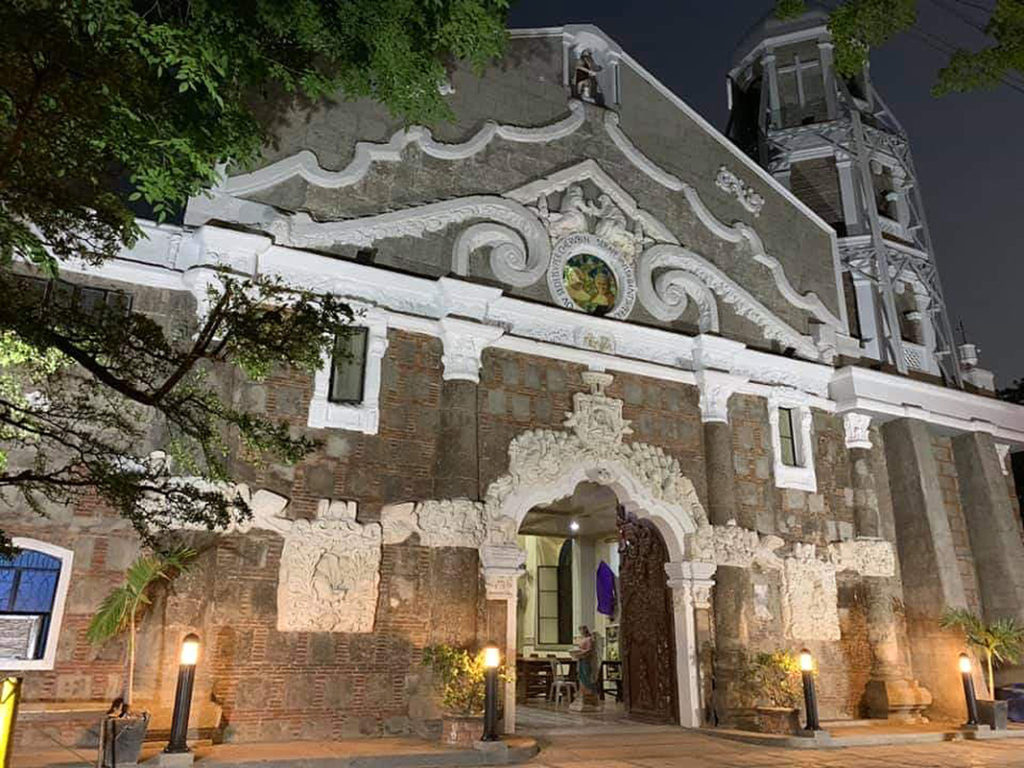
Inside the church is a tunnel that, according to history, was used by priests during the Spanish regime to keep gold, religious statues, and ornate jewelry hidden from the sight of treasure hunters. It is believed that it was also in this tunnel that some revolutionaries and Spaniards were buried during the war. This was also Gen. Tanaka’s (Japanese Imperial Army) last battlefield.
It was restored most recently in 2015 and was returned to the Diocese by the National Historical Commission of the Philippines during the town fiesta in 2019. It was declared a diocesan shrine in 2013.
- Location: Poblacion Road, Calumpit, Bulacan
- Mass schedules:
- Sundays: 5:30am; 7am; 8:30am; 4:30pm; 5:30pm
- Mondays to Saturdays: 6am
- Wednesdays (additional schedule): 5:30pm
- Saturdays (anticipated mass): 6pm
Parish of Sta. Monica (Angat)
The Sta. Monica de Angat Parish is one of the oldest churches in Bulacan, dating back to 1758. This 400-year-old church displays Baroque architectural characteristics. This could be verified with the existence of 18 adobe posts, along with eight windows. Windows, statued niches, and spaces between horizontal string courses dividing the front facade into three parts, were ornamented with floral carvings. Also, foliated crestings on the raking course of the pediment were used as an added ornamentation.
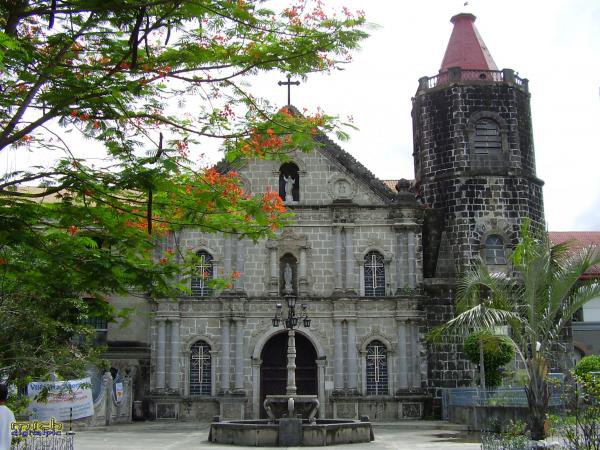
The ceiling paintings were created to resemble those at the Sistine Chapel at the Vatican. Also, the History of Christianity in the Philippines and cultures of Angat, Bulacan, such as simbang gabi, Flores de Mayo, prusisyon ng Santissimo Sakramento, and fiesta, were incorporated within the ceiling paintings. A fitting decoration for one of the oldest churches in Bulacan.
Augustinian priests were in charge of managing the church from 1683 when Angat became a parish until 1898. After this, the church management was turned over to diocesan priests.
- Location: Matias A. Fernando Ave., Poblacion, Angat, Bulacan
- Mass Schedule:
- Sundays: 6am; 7:15am; 8:30am; 9:45am; 6pm
- Mondays to Saturdays: 6 am
- Wednesdays (additional schedule): 5 pm
- Saturdays (anticipated mass): 6 pm
Parish of San Agustin (Baliuag)
Constructed between 1769 and 1774, the St. Augustine Parish Church in Baliuag is among Bulacan’s oldest churches. The style of the Baliuag church is Baroque, as seen on the facade and interiors. The interplay of volumes and openings creates dramatic tension. The Practico is the latest addition which mars the complete layout of a style.
Apart from its beautiful church, the parish is also famous for The Baliuag Lenten Procession on Good Friday. This is one of the longest Lenten processions in the Philippines. The procession around the town is joined by the parishioners along with floats (carozas or carriages) of life-size dioramas depicting scenes during the time of Jesus. The families of Baliuag launch over a hundred richly adorned giant floats depicting the passion of Jesus Christ.
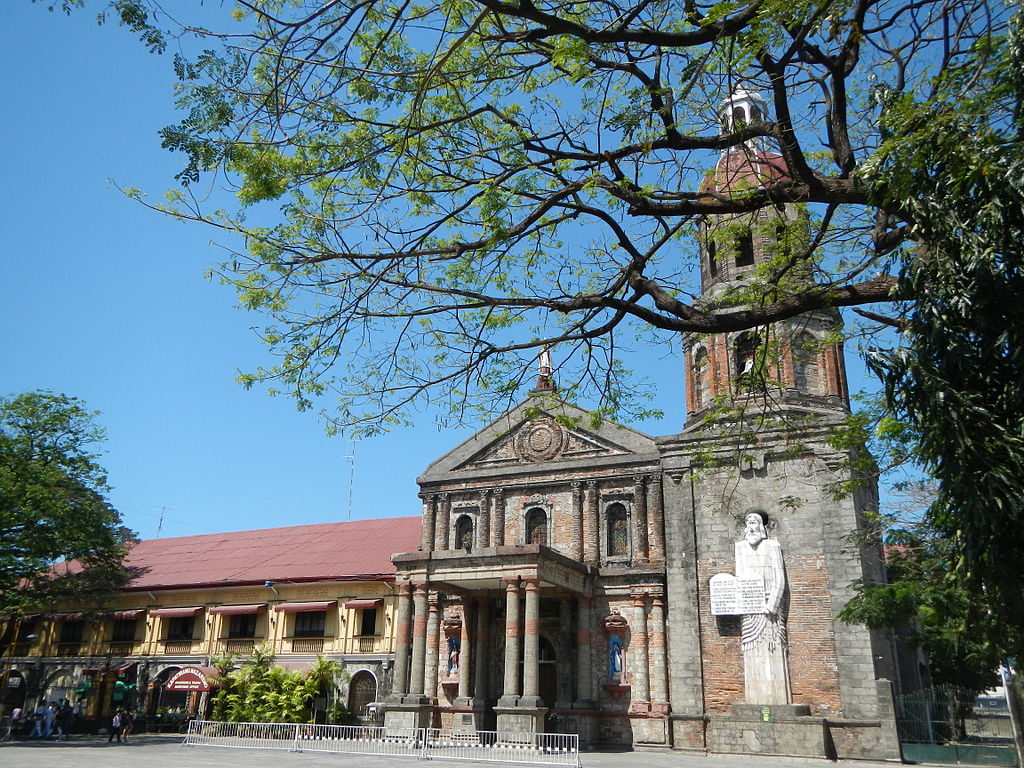
- Location: Benigno S. Aquino Ave, Baliuag, Bulacan
- Mass Schedule:
- Sundays: 5am; 6am; 7:30am; 9am; 10:30am; 4pm; 5:30pm; 7pm
- Mondays to Saturdays: 5:30am; 7am; 5:30pm
- Wednesdays, Fridays (additional schedule): 8am
- Saturdays (anticipated mass): 5:30 pm
Parish of Santiago Apostol (Plaridel)
The church of Plaridel or Quingua was first established as one of the visitas of Malolos in 1581, and Fray Mateo Mendoza OSA, who administered the Malolos Convent, began the Christianization of Encomienda Binto y Quingua. With Quingua (currently called Plaridel) being one of the oldest towns in the Philippines, it’s not a surprise that its parish church is one of the oldest churches in Bulacan.
The present stone and brick church is barn-style Baroque mixed with Moorish ornamentation. At the peak of the pediment is a carving of the pierced heart of Jesus. Attached to the left of the façade is the five-story bell tower with a quadrilateral base and octagonal upper levels and topped by a cone-shaped dome. The Belfry has five bells, the biggest of which is dedicated to Nuestra Senora de la Consolación.
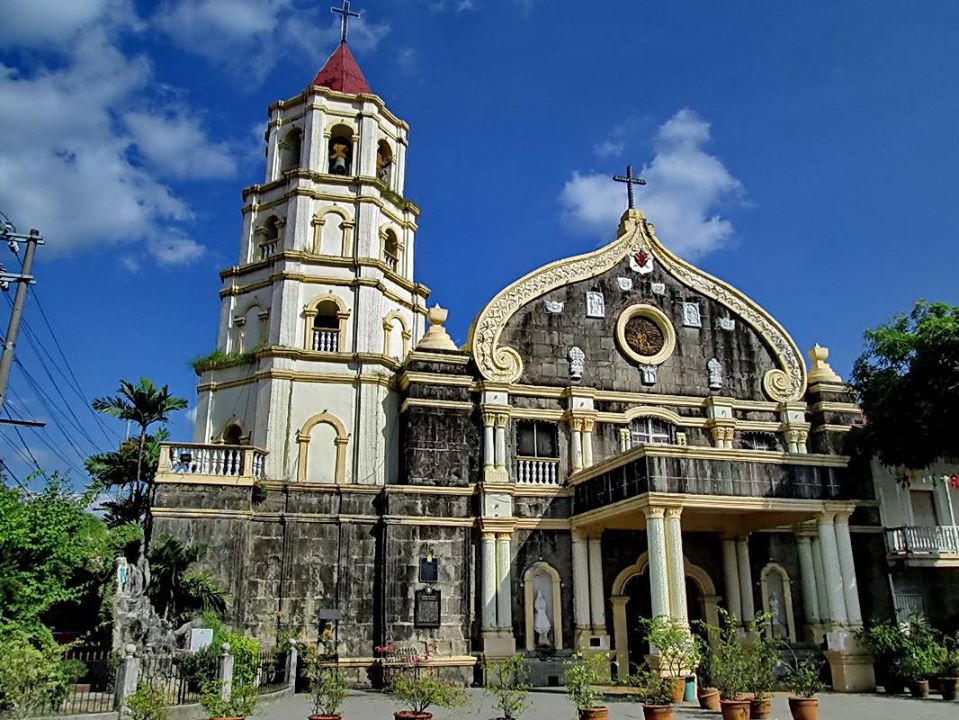
- Location: Gov. Padilla Rd, Garcia Street, Poblacion, Plaridel
- Mass Schedule:
- Sundays: 5am; 6:30am; 8am; 9:30am; 5pm; 6pm; 7pm
- Mondays to Fridays: 6am
- Wednesdays, Thurdays (additional schedule): 5:15pm
- Saturdays: 5pm
Basilica Minore de Immaculada Concepcion (Malolos)
Malolos was Christianized in 1580 by the Augustinians and has been a focal point in the country’s history. The church began with its first building in 1591, making it one of the oldest churches in Bulacan. In succeeding years, it has been rebuilt and enlarged.
The current church was consecrated in 1826 but was heavily damaged in the earthquakes of 1863 and 1880. These were renovated but were burned by the revolutionaries in 1898. Starting in 1963, the church was heavily renovated, and portions of the facade and interior were altered.
Apart from being the ecclesiastical seat of the Bishop of the Diocese of Malolos, it has also played an important role in Philippine History. It was a center of faith and ecclesiastical activities since Spanish times from 1571.

The Cathedral’s convent served as the presidential palace of Emilio Aguinaldo during the First Philippine Republic from September 15, 1898, to March 31, 1899. It was later ordered to be burned down as Aguinaldo escaped further north in 1899.
On top of the rich history of one of the oldest churches in Bulacan, the almost neoclassical design is beautiful. The most predominant feature is the dome which is intricately decorated when viewed inside the church. The church’s huge stained-glass windows, paintings, and religious statues are exceptional. The long aisle and dramatic lighting also make it one of Bulacan’s favorite wedding church venues.
- Location: Poblacion, City of Malolos, Bulacan
- Mass Schedule:
- Sundays: 5am; 6am; 7am; 8am; 9am; 10am; 11am; 5pm; 6pm; 7pm
- Other Days, except Wednesdays: 5:30am; 6am; 7am; 6pm
- Wednesdays: 5:30am; 6am; 7am; 5:30pm; 6:30pm
- Saturdays (anticipated mass): 6pm
Parish of Our Lady of Mt. Carmel / Barasoain Church (Malolos)
The Barasoain Church was originally founded by Augustinian Missionaries and built for the Roman Catholic masses in Malolos during the mid-1500s to early-1600s. No doubt, this is one of the oldest churches in Bulacan.
It was well-known for its intricate architecture and adornments. However, it was burned down during the Philippine Revolution in the 1800s. It was renovated and reconstructed, but its haunting beauty remained.
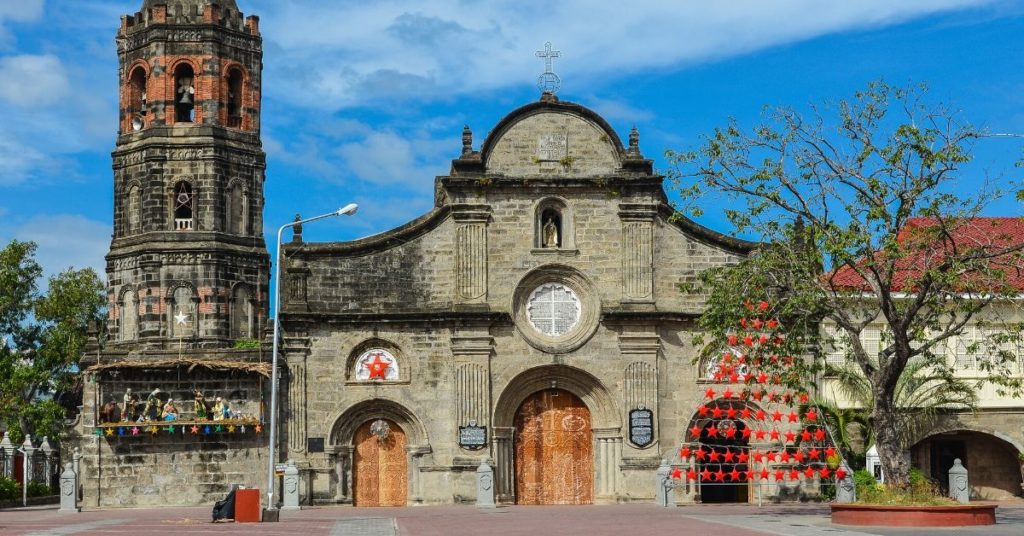
Read: BARASOAIN CHURCH: A Symbol of History and Faith for 4 Centuries
In 1898, under what was then a revolutionary government, the Philippines’ capital was moved to Malolos. The Barasoain Church was chosen to be the site of the First Philippine Congress, more widely known as the Malolos Congress. This led to the drafting of the Malolos Constitution in 1899. With the constitution ratified, the Filipinos could inaugurate the First Philippine Republic. Because of this, the church, one of the oldest churches in Bulacan, was dubbed the “Cradle of Democracy in the East.”
- Location: Paseo del Congreso, San Gabriel, City of Malolos, Bulacan
- Mass Schedule:
- Sundays: 6am; 7am; 8am; 9am; 10am, 11:00 AM, 5:30 PM & 6:30 PM (English mass)
- Mondays to Saturdays: 6am; 6pm
- Saturdays (anticipated mass): 6pm
Diocesan Shrine of Nuestra Señora de La Inmaculada Concepcion de Salambao / Parish of San Pascual Baylon (Obando)
The Franciscan Order built the Obando Church, headed by Rev. P. Manuel de Olivencia, the first curate of Obando, on April 29, 1754. This 400-year-old church is among the oldest churches in Bulacan.
The church was destroyed in World War II during the fight for liberation from Japanese rule. According to some reports, the original statues of Our Lady of Salambao, Saint Clare, and Saint Paschal Baylon were also destroyed during the fighting. The images presently venerated are commissioned to replicate the original images. The church was rebuilt in 1947.
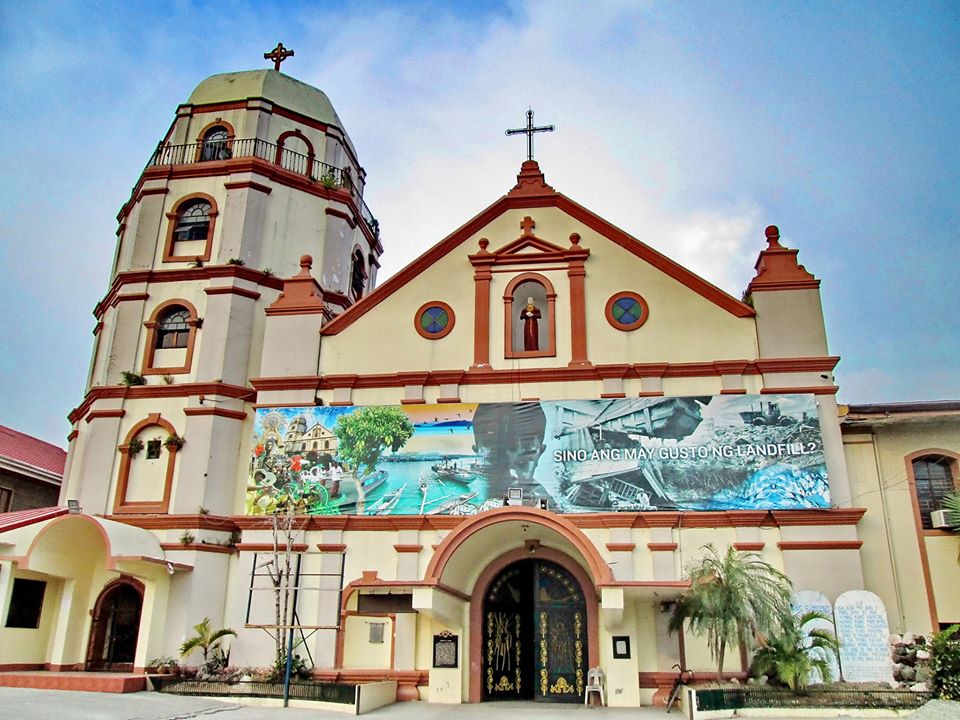
This parish is most famous for the Obando Fertility Rites. These fertility rites even date before the oldest churches in Bulacan. This is a dance ritual, which later became a Catholic festival celebrated every May. Locals and pilgrims, sometimes dressed in traditional costume, dance and sing in the town’s streets to honor and beseech Obando’s three patron saints: San Pascual (Paschal Baylon), Santa Clara (Clare of Assisi) and Nuestra Señora de Salambáo (Our Lady of Salambao).
Read: 5 Fascinating Bulacan Festivals during the Month of May
- Location: Pag-asa, Obando, Bulacan
- Mass Schedule:
- Sundays: 5am; 6:30am; 8am; 9:15am; 10:15am; 5pm; 6:30pm
- Mondays to Saturdays: 6am
- Saturdays (anticipated mass): 5pm
Note: Send us your comments and suggestions for our 2nd list of the oldest churches in Bulacan. Watch out for more of our Visita Iglesia series that will feature not just the oldest churches in Bulacan, but also other parishes that are in the forefront of religious expression of our culture.
Thank you for featuring the old churches of Bulacan for visita Iglesia. Can you give us the order in visiting those churches to save travel time since we live in Quezon City.
In our opinion, here’s the best route based on the nearest to farthest from QC:
1. Diocesan Shrine of Nuestra Señora de La Inmaculada Concepcion de Salambao / Parish of San Pascual Baylon (Obando)
2. Parish of Santiago Apostol (Plaridel)
3. Parish of Our Lady of Mt. Carmel / Barasoain Church (Malolos)
4. Basilica Minore de Immaculada Concepcion (Malolos)
5. Diocesan Shrine and Parish of St. John the Baptist (Calumpit)
6. Parish of San Agustin (Baliuag)
7. Parish of Sta. Monica (Angat)
From Angat, you can use the Balagtas-Plaridel Bypass road to NLEX Balagtas exit, southbound, going back to QC.
May i know po what time is the visita iglesia for each church?